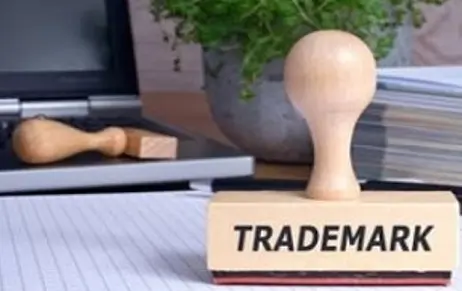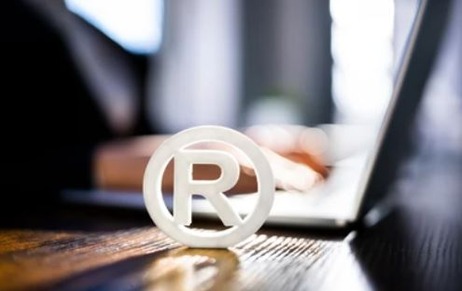TRADEMARK A trademark is something that we encounter on a regular basis. It is the…
How to Sound Trade marks Register Explain With Examples
Introduction
How to Sound Trade marks Register : In India, sound can be copyrighted as a succession of musical notes with or without words. Sound trademarks are widely popular in the United States, and knowledge of them is rapidly growing in India. In India, sound that is graphically represented by a succession of musical notes with or without words can be protected under the Trademark Act. If a sound is or has become a distinctive symbol linked with one undertaking, it will be eligible for trademark registration under the Trademark Act, 1999.As a result, in order for a sound trademark to be registered, the average consumer must perceive the sound as being linked with a specific service or product. The foundations of sound trademark registration in India, as well as instances of well-known sound trademarks from around the world, are presented in this blog.
What are Sound trademarks?
A sound trademark is one that uses sound to perform the trademark function of uniquely identifying the commercial source of items, goods, and services. In recent years, a sound mark has become more popular as a trademark in the marketplace. It is a non-traditional brand. Sounds can help identify a product’s or service’s provenance or trading origin.
The new requirement is that the sound be submitted in MP3 format. It should not be more than 30 seconds and should include a graphical depiction of the sound notations. Prior to sound marking, candidates had to register applications using graphical representation or by typing out the melody. In 2008, Yahoo Inc. was given the honour of being the first sound mark in India. Yahoo was yodelled by a human voice. ICICI Bank was the first Indian company to register a sound mark. National Stock Exchange (Theme song), ICICI Bank (Corporate jingle DhinChikDhinChik), Britannia Industries (Four note bell sound), Cisco (Tune heard when logging in to the conferencing service Web Ex), Edgar Rice Burroughs (Tarzan Yell by its toy action figure), Nokia (Guitar notes on switching on the device), Yahoo (Human voice yodeling Yahoo), and Netflix (Ta-Dum) Sound are among some of the registered sound marks in India.
Time Warner Entertainment (viz. Looney Tunes Theme Song); MGM Entertainment (viz. the Roaring Lion); and Twentieth Century Fox (viz. ‘orchestral tune – drums, trumpets, strings’, ‘cat’s meow’, and so on) are some classic examples of sound trademark registrations granted to other entities in other jurisdictions. The European Court of Justice (“ECJ”) recognized sounds as trademarks and established guidelines for how such marks should be represented when filing an application, namely, the application should state clearly that the mark is intended to be a sound mark and that musical notation, adequate and precise enough to communicate the mark should be included in the application. The ECJ ruled that a sound might be trademarked as long as it was distinct in nature and could be graphically represented. The ECJ went on to say that descriptive words were unlikely to amount to graphical representation, and that while musical notes or other notations would satisfy for graphical representation, onomatopoeia would not.
Advantages of a Sound Trademark
The primary advantage of registering a trademark is exclusivity. This means you’ll be the only one in the country to launch or sell products or services bearing the same brand name. In addition, the brand is what the customer associates with the company. It’s also how the general public perceives the situation. In the end, a company’s ultimate value is determined by factors other than its goodwill. If you have a strong trademark, you automatically have the right to sue anyone who infringes on your rights. You can easily initiate a case in federal court if a third party uses the sound mark without your permission. The importance of establishing the company’s brand early on is critical to the company’s future growth and success. A strong legal foundation on which you may raise the standing of your firm in the market is a fantastic and exceptional brand that is assured by trademark registration. These advantages might help you and your company creates a strong impression in today’s global business world. It’s crucial to create a final version of the sound mark before proceeding with the registration. It has a positive impact on customers and reflects the image you wish to project. After the initial prototypes have been confirmed, it will be best to test the audio recording with focus groups. Conduct an audio touch point analysis to determine where the audio recording will come into contact with customers. Also, consider whether the sound should be consistent across all touch points or tailored to meet diverse needs.
Sound Trademark registration process in India
A sound trademark is not defined in the Indian Trademarks Act, 1999 (‘Act’). The Act expressly states that the trademark must be able to be represented visually. As a result, a sound graphically represented by a succession of musical notes, whether without or with words, may be protected under the Act. Sound trademarks aren’t like other trademarks.
The 2017 Trademarks Rules (‘Rules’) do, however, clearly acknowledge sound as a trademark category. Businesses get more exclusivity for their marketing and branding tactics to attract, entice, and appeal to consumers in a highly competitive market as a result of the Rules’ recognition of sound trademarks. The Trade Mark Rules (‘Rules’) were amended in 2017 to include Rule 26(5), which stipulates that the sound mark may be duplicated and submitted in MP3 format “together with a graphical representation of its notations.” Thus, musical notes can be used to graphically depict a sound mark in India, which has simplified the trademark registration process. In order to register a sound mark under current law, two conditions must be met:
- the application must declare that the mark to be registered is a sound mark; and
- The applicant must submit an MP3 reproduction of the sound mark that is no longer than 30 seconds long, as well as a graphical depiction of the sound mark in the form of musical notations, along with the application.
It goes without saying that even for sound mark applications; the minimum standards of trademark registration must be met. For example, the sound that is being trademarked must be distinct, and sounds that are generic would not be eligible for registration.
Sound mark applications are processed in the same way as other trademark applications submitted with the Indian Trade Marks Registry. In addition to the required information [such as the applicant’s name, address, legal status of the applicant entity (if any), class of goods/services, specification of goods/services, and so on], one of the most important factors to consider when filing a trademark application is the date of the sound mark’s first use. The availability of any documentation evidence to show the use of the mark at the time of filing the application will be favourable since the distinctive element of sounds can be reasonably easily proven through acquired distinctiveness (by way of the use of the sound mark).
Furthermore, due to the particular nature of sound mark registrations, we should mention that applications for sound mark registrations are investigated more closely (in contrast to other marks) during the next steps in the trademark application process. However, as long as the trademark application complies with all legislative requirements, it will be considered. The steps for publication and registration are the same as they are for any other trademark application.
Conclusion
In today’s competitive market, product owners must make every effort to ensure that their products and services are not only visible but also audible to consumers. However, because the practise of registering sound markings is still uncommon, there are certain ambiguities. Many non-traditional marks, such as smell and touch marks, have yet to be granted trademark protection in India. The new provisions in the Trademark Act (1999) are a huge step forward for the government, as they will aid in economic development and encourage more small businesses and start-ups. Furthermore, Trade-Related Aspects of Intellectual Property Rights (TRIPS )can be a useful tool in establishing a consolidated set of laws and legal knowledge on the registration of sound and other non-conventional marks in India, as well as providing some uniformity and understanding. Until then, it is fair to conclude that India has a long way to go in terms of embracing and recognizing the existence of sound and other non-conventional trademarks, as well as their legal protection.
Related Article : A Trademark Could Be A Smell Mark
Author: Anuja Saraswat – a student of B.A.LL.B (Hons.) from NMIMS Kirit P. Mehta School of Law (Mumbai), in case of any queries please contact/write back to us via email [email protected] or contact us at IIPRD.



